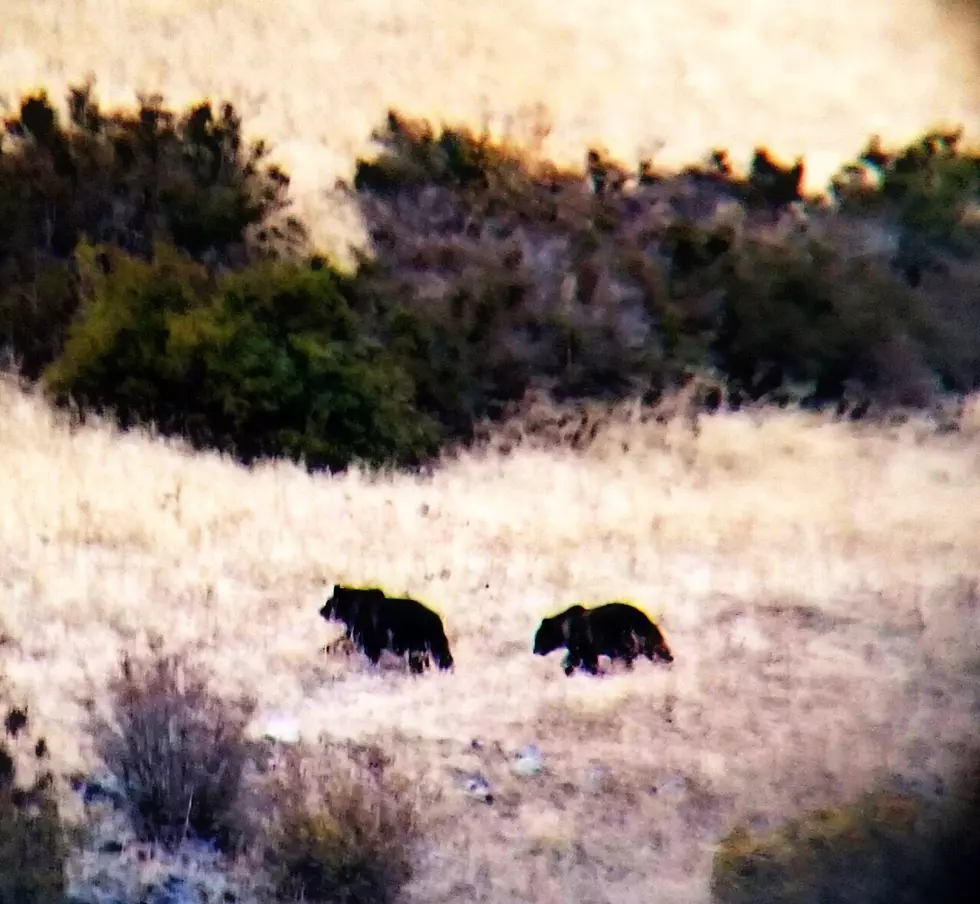
Orphaned grizzly cubs wander Mission Valley, unschooled in hibernation
Two young grizzly bears are wandering the Mission Valley this winter, never having hibernated because the sow grizzly that would have taught them that skill was killed by a poacher last fall.
The Confederated Salish and Kootenai Tribes Wildlife Management Program made the announcement via Facebook on Thursday afternoon, warning area ranchers and others to avoid the young bears and to alert tribal conservation officers to any sightings.
Federal and tribal biologists are concerned because it’s calving season in the Mission Valley, and the bears have been seen near one ranch operation. Because they have been outside in the cold all winter, scavenging for food, the bears could see newborn calves as a food source.
The Facebook post said officers have tried to trap the young bears, but the extreme cold of recent weeks has hampered those efforts.
“Capturing bears in the sub-zero temperatures we have been experiencing presents challenges to the operational mechanics of the trap, accessibility and ability to move traps in heavy snow conditions, and maintaining a bait source that is pungent enough to draw the bears into the trap site,” according to the post.
“We understand that cattle ranchers in the Mission Valley have a lot of work to do during calving season,” the tribal officials said. “This is even more stressful when we are in the middle of an arctic blast. While protecting their investment is already a high priority, it can be more stressful when grizzly cubs are roaming around.”
In answer to a Facebook comment, officials said they are using cracker shells in an attempt to haze the bears away from calving areas. So far, though, those efforts also have not succeeded.
That does not, however, mean area residents should take matters into their own hands, the tribes warned.
“All Montana grizzly bears are listed as threatened under the federal Endangered Species Act,” came the explanation. “That means that killing a grizzly bear in the Lower 48 states is both a federal and state offense that can bring criminal and civil penalties of up to $50,000 and a year in jail. Individuals may only legally take a grizzly bear in an act of self‐defense or defense of another human if there is an immediate danger of being attacked. Grizzlies that threaten livestock, however, are not fair game.”
The cubs’ survival is anything but certain, as it has been since the sow grizzly was killed by a poacher last year.
“While occasional poaching of grizzly bears is an unfortunate and avoidable reality on the Flathead Reservation, we believe these young cubs were the offspring of a female grizzly bear that was shot and killed last fall,” according to the CSKT Facebook post. “Because these were cubs-of-the-year, meaning this was their first year alive and out with their mother, she would have led them back to their den for hibernation last fall. …
“They would have emerged again, all together this spring, to learn from her one more year before she could breed again and they would disperse out on their own. However, because they were not taught what to do when the temperatures got colder, they just kept roaming around the valley and eating. They had not been seen (or at least reported) until the recent cold snap.”
The female bear was fitted with a radio collar, which alerted biologists to the sow’s death. The cubs, however, were not found or captured in the fall and were not wearing radio collars.
Then came the record cold and the young bears emerged on the valley floor.
“This is a very unusual situation,” the tribes said.
Three female grizzly bears were poached on the Flathead Reservation in 2018. Two lactating females were shot and killed in the Moiese area, and a third was killed near St. Ignatius.
“It was a rough year for this species,” in the tribes’ words. Another six grizzly bears and their cubs – and possibly two more, unconfirmed – were killed on Flathead Reservation roads in 2018, a record.
Anyone who sees a grizzly bear threatening livestock should call tribal dispatchers at 406-675-4700. The tribes said a conservation officer will respond.
They also asked the public to avoid the area where traps have been placed, so the biologists and other officers can attempt to manage the situation.
Word has spread through the Mission Valley and there has been “vehicle congestion in the area,” “creating a challenge for getting the bears to the trap.”
